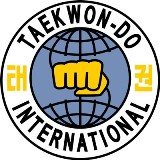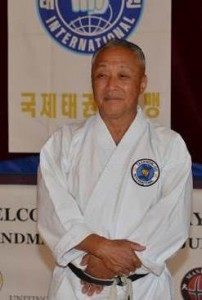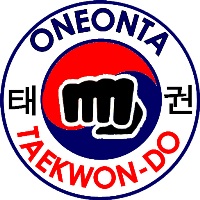The History and Facts of Taekwon-do
Taekwon-Do is a Korean unarmed art of self-defense, founded and created by General Choi Hong Hi, then a general in the South Korean Army, gave its name Taekwon-Do on April 11th 1955, and until his death in 2002, he worked tirelessly and selflessly in the promotion of Taekwon-do and in the scientific advancement of Taekwondo techniques.
 Below you can find a more detailed list of the highlights of the development of martial arts on the Korean peninsula from ancient times until the present. As you will see, Taekwon-do is not a martial art that was developed by one single person, nor can it be traced back to any one individual. Instead, Taekwon-do is a discipline that has scientifically developed into a system of various theories, terminologies, techniques, methods, rules and spiritual foundations. As a result, the discipline, or the Way, can be constantly improved upon by its practitioners and master instructors. This flexibility allows my fellow teachers and I to teach the fundamentals of Taekwon-do to new generations, and the next generation of teachers can in turn teach the Way of Taekwon-do to following generations, in each case adapting Taekwon-do to the changing times and students, while remaining true to the founding tenets. I consider Taekwon-do to be a living art of self-defense that will continue to evolve for years to come.
Below you can find a more detailed list of the highlights of the development of martial arts on the Korean peninsula from ancient times until the present. As you will see, Taekwon-do is not a martial art that was developed by one single person, nor can it be traced back to any one individual. Instead, Taekwon-do is a discipline that has scientifically developed into a system of various theories, terminologies, techniques, methods, rules and spiritual foundations. As a result, the discipline, or the Way, can be constantly improved upon by its practitioners and master instructors. This flexibility allows my fellow teachers and I to teach the fundamentals of Taekwon-do to new generations, and the next generation of teachers can in turn teach the Way of Taekwon-do to following generations, in each case adapting Taekwon-do to the changing times and students, while remaining true to the founding tenets. I consider Taekwon-do to be a living art of self-defense that will continue to evolve for years to come.
It is an unfortunate reality that martial arts are often attributed to a single person or claimed by a particular nation. This usually results from the selfishness of individuals or the nationalism of governments, with something to gain by claiming that they practice the original or pure form of a particular martial art. In particular, dictatorships are prone to these types of claims. However, teachers of Taekwon-do and other martial arts need to do their part to correct these misnomers by teaching their students the history of their particular style of martial arts. It is important that students be taught the truth about the fundamentals of the martial arts that they study, in order to get the most out of their training. It helps no one if instructors try to make martial arts the product of one nation or try to imbue martial arts with mythological backgrounds and lineages of thousands of years.
The following highlights the history of martial arts on the Korean Peninsula:
751 A.D.: At Sok Kul Temple, a statute of Kumgang Yuksa, a famous warrior, was erected in a martial arts fighting stance in a small Buddhist cave during the reign of King Hye-Gong (742-762).
935 to 1392: During the Koryo Dynasty, the fighting art Taek Kyon was founded.
1392 to 1907: Yi Dynasty. Some historians of Karate believe that envoys from Okinawa learned
Soo Bak Ki from mainland China and introduced it to Okinawa. A book on Soo Bak Ki was published
during the Yi Dynasty to act as a training aid for the military.
1921 to 1945:Karate (also known as Do-Te or Okinawa-Te). During the years of Japanese occupation
in Korea, the practice of fighting arts was banned.
1936: The concept of “Do” was introduced and “Karate” became “Karate-Do.” by Gichin Funagoshi
1945: Korea is liberated from the Japanese. Quite a few Koreans (e.g. Choi Hong Hi, Ro Byong Jik, Lee Won Kook and more), who practiced Karate in Japan, brought their martial arts training back to Korea after World War II.
In 1945, the first organization to teach martial arts in Korea, Cho Sun (Korean) Yeon Moo Kwan, which was to influence Taekwondo, was formed. Judo, Karate-Do, Gom-Do (swordsmanship), Kwon Bop (Chuan-Fa in Chinese and Kenpo in Japanese) were taught. Cho Sun Kwon Bop Association
1945 to 1955: Taekwondo Kwans (associations) were formed: Chung Do Kwan, Ji Do Kwan, Moo Duk Kwan, Oh Do Kwan, Chang Moo Kwan, Kang Duk Won and Song Moo Kwan. The name Taekwondo was created on April 11, 1955. For ten years, however, Taekwondo was also called Gong Soo Do (meaning empty hand), Tang Soo Doo (meaning China hand) and Soo Bak Do (meaning fighting hand).
1961: The Korea Tae Kwon Do Association was founded, recognizing the nine Kwans. It then changed it name on September 16, 1961 to the Korea Tae Soo Do Association and then changed back to the Korea Tae Kwon Do Association on August 5, 1965.
1962: On June 20, the Korea Athletic Union recognized Taekwon-do as one of its national sport.
1964: On September 3, Taekwon-do was officially recognized by the Korean Athletic Union as a national event with seven weight categories.
1966: The International Taekwondo Federation was founded.
1971: The International Taekwondo Federation reached 67 countries.
1972: The Kukkiwon was founded.
1973: On May 28, the World Taekwondo Federation was founded. The First World Taekwondo championship at the Kukkiwon was held. By then, Taekwon-do was being practiced in 108 countries and 200 instructors were teaching in schools around the world.
1980: The International Taekwondo Federation introduces Taekwondo to Poland, the former Soviet Union and North Korea.
1994: Taekwon-do becomes an official Olympic event.
2004: Taekwon-Do International is founded.
The growth of Taekwondo around the world from 1955 until now has been astronomical. As a result, in 1994 Taekwondo was recognized by the International Olympic Committee as an official Olympic event and in 2000 it debuted as a medal sport at the Sydney Olympics. The true Grandmasters of Taekwon-do around the world deserve wide recognition for their untiring efforts in the promotion of Taekwondo, and credit for the tremendous success and acceptance Taekwon-do has received.
 However, Olympic fame is not Taekwon-do’s primary purpose. Perhaps traditional original Taekwon-do may be better for the future.
However, Olympic fame is not Taekwon-do’s primary purpose. Perhaps traditional original Taekwon-do may be better for the future.
Following are earlier notable leaders and grandmasters:
1940’s — Lee, Won Kuk Ro, Byoung Jik Yun, Byoung In Yun, Que Byoung Chun, Sang Sub Hwang, Ki Choi, Hong Hi
Kang, Suh Chong Son, Duk Son Lee, Chong Woo Uhm, Woon Kyu Nam, Tae Hee
Written by: Suk Jun Kim, 9th Dan

